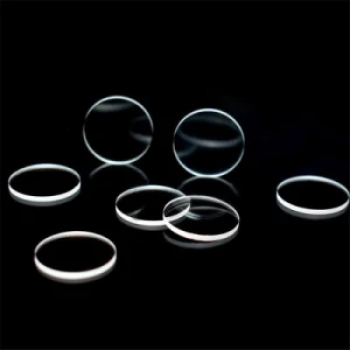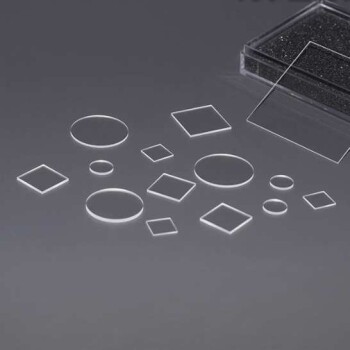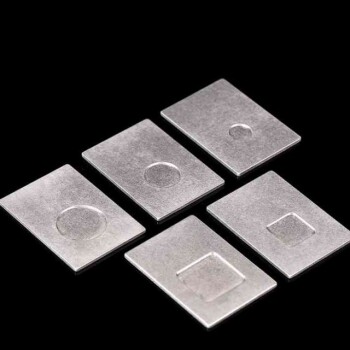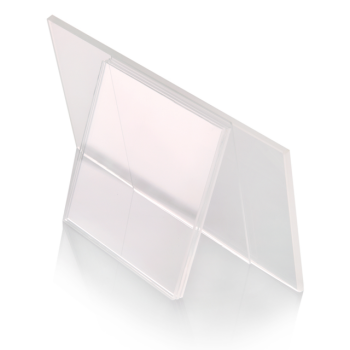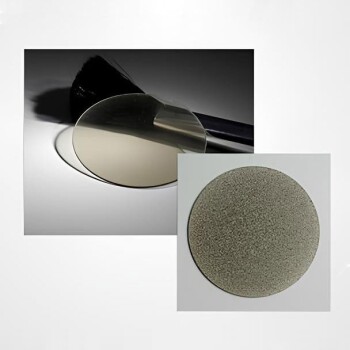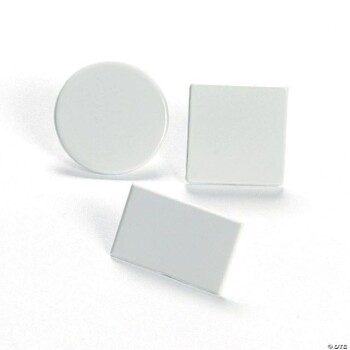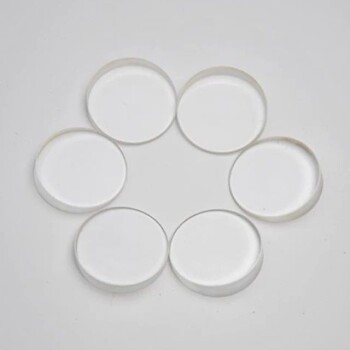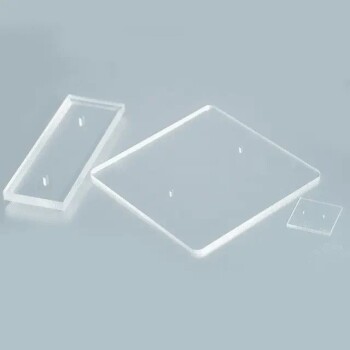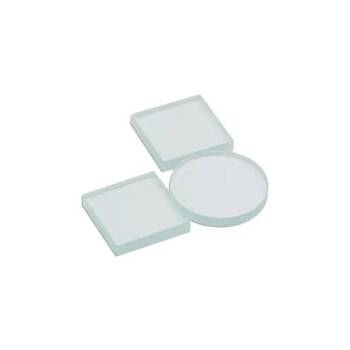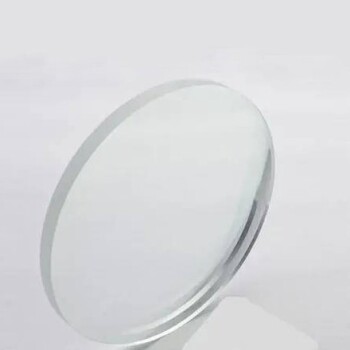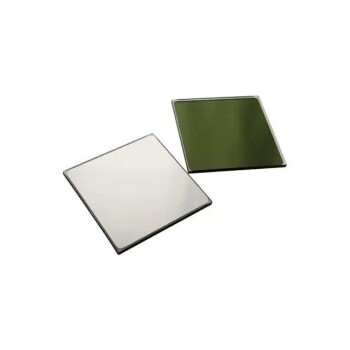Introduction to Fused Silica
Definition and Composition
Fused silica, a form of silicon oxide, stands out due to its amorphous structure and high purity. Unlike crystalline quartz, which has a regular, ordered arrangement of atoms, fused silica is non-crystalline, meaning its atoms are arranged in a random, disordered fashion. This unique structure is primarily responsible for its exceptional properties.
Fused silica is composed of nearly pure silicon dioxide (SiO₂), with trace impurities typically less than 50 parts per million. This high level of purity is crucial for its superior thermal, optical, and mechanical properties. The absence of significant impurities allows fused silica to maintain its stability over a wide range of temperatures and environments, making it a preferred material in various high-tech applications.
The manufacturing process of fused silica involves melting high-purity quartz or natural silica sand at extremely high temperatures, typically around 1,700 to 2,000 degrees Celsius. This melting process eliminates any crystalline structure, resulting in a glassy, homogeneous material. Post-melting, the material is rapidly cooled to retain its amorphous state, ensuring that the final product retains its unique properties.
In summary, fused silica's composition and manufacturing process not only define its physical and chemical characteristics but also underscore its versatility and importance in advanced technological applications.
Distinction from Conventional Glass
Fused silica stands apart from conventional glass primarily due to its purity and the absence of additional components. Unlike conventional glass, which often contains various additives to enhance specific properties or facilitate manufacturing processes, fused silica is made almost entirely of silicon dioxide (SiO₂). This high purity is the cornerstone of its superior thermal and optical characteristics.
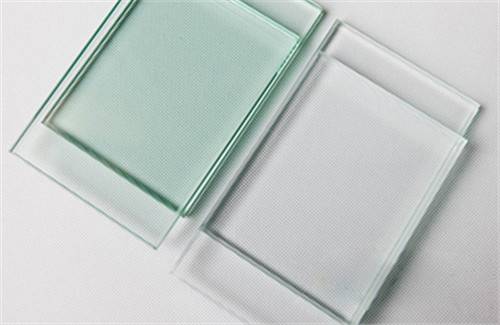
In terms of thermal properties, fused silica boasts an exceptionally low coefficient of thermal expansion, which means it expands and contracts very little with temperature changes. This makes it highly stable over a wide range of temperatures, from cryogenic levels to extreme heat. Conventional glass, on the other hand, typically has a higher coefficient of thermal expansion, making it more susceptible to thermal stress and potential failure under extreme conditions.
Optically, fused silica is renowned for its transparency across the ultraviolet (UV), visible, and infrared (IR) spectra. This broad transparency is a direct result of its high purity and lack of impurities that could scatter or absorb light. Conventional glass, even high-quality optical glass, often includes elements that limit its transparency to specific wavelengths, particularly in the UV and IR ranges.
The table below highlights some key differences between fused silica and conventional glass:
| Property | Fused Silica | Conventional Glass |
|---|---|---|
| Composition | Almost entirely SiO₂ | Contains various additives |
| Coefficient of Thermal Expansion | Very low | Higher |
| Transparency | Broad UV to IR | Limited by additives |
| Chemical Resistance | Highly resistant | Varies by composition |
| Electrical Insulation | Excellent | Variable |
These distinctions make fused silica an ideal material for applications requiring high thermal stability and broad-spectrum optical transparency, such as in the aerospace, semiconductor, and optical industries.
Properties of Fused Silica
Chemical Properties
Fused silica is renowned for its exceptional chemical inertness and high purity, which collectively endow it with remarkable resistance to a broad spectrum of chemicals. This property is particularly crucial in environments where chemical exposure is inevitable, such as in laboratories, industrial settings, and high-tech manufacturing processes. Despite its general resistance, fused silica is not impervious to all substances. It exhibits notable susceptibility to potassium hydroxide and hydrofluoric acid, which can degrade its structural integrity under prolonged exposure.
To illustrate, consider the following table that highlights the chemical resistance of fused silica compared to other materials:
| Chemical Compound | Fused Silica Resistance | Conventional Glass Resistance |
|---|---|---|
| Potassium Hydroxide | Susceptible | Susceptible |
| Hydrofluoric Acid | Susceptible | Susceptible |
| Sulfuric Acid | Resistant | Resistant |
| Hydrochloric Acid | Resistant | Resistant |
| Sodium Hydroxide | Resistant | Resistant |
This comparative analysis underscores the unique chemical robustness of fused silica, making it a preferred material in applications where chemical stability is paramount. However, its vulnerability to certain chemicals necessitates careful handling and appropriate protective measures in contexts where these substances are prevalent.
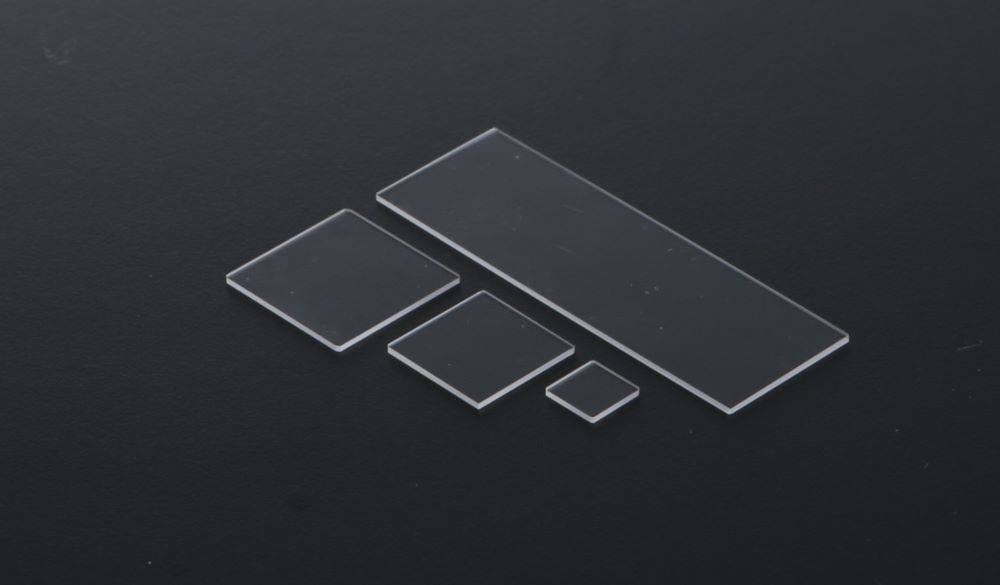
Electrical Performance
Fused silica is renowned for its exceptional electrical insulating properties, characterized by an extraordinarily high resistance. This attribute makes it particularly suitable for applications requiring high-frequency performance. The material's ability to maintain its electrical insulation under varying conditions is crucial in environments where conventional materials might fail.
For instance, in the realm of electronics and telecommunications, fused silica is often employed in the fabrication of components that operate at microwave and millimeter-wave frequencies. Its high resistance ensures minimal signal loss, which is vital for maintaining the integrity and efficiency of high-frequency transmissions.
| Property | Value | Impact |
|---|---|---|
| Electrical Insulation | High Resistance | Minimizes signal loss in high-frequency applications |
| Frequency Range | Microwave to Millimeter-Wave | Suitable for advanced telecommunications and electronics |
| Stability | Maintains Insulation Under Stress | Ensures reliable performance in demanding environments |
In addition to its use in high-frequency applications, fused silica's electrical properties also contribute to its suitability in high-temperature environments. Its ability to insulate electrical components while withstanding extreme temperatures makes it an invaluable material in industries such as aerospace and semiconductor manufacturing.
Mechanical Properties
Fused silica is renowned for its exceptional mechanical properties, which set it apart from other materials, particularly in the realm of microdevices. Its inherent flexibility allows it to withstand stress and deformation without cracking, making it an excellent choice for applications where durability is paramount. This flexibility is complemented by its impressive strength, enabling fused silica to endure significant mechanical loads without compromising its structural integrity.
Moreover, fused silica exhibits remarkable resistance to compression. This property is crucial in environments where materials are subjected to high pressures, such as in microfluidic devices or high-stress mechanical components. The combination of flexibility, strength, and compression resistance renders fused silica an ideal material for the fabrication of microdevices, where precision and reliability are non-negotiable.
In summary, the mechanical properties of fused silica—flexibility, strength, and compression resistance—collectively contribute to its suitability for a wide array of microdevice applications, ensuring both performance and longevity.
Optical Properties
Fused silica is renowned for its exceptional transparency across the ultraviolet (UV) to infrared (IR) spectrum, a feature that significantly enhances its suitability for a wide array of optical applications. This transparency is not merely a matter of degree but a fundamental property that sets fused silica apart from other materials in the optical domain.
The optical clarity of fused silica is particularly evident in its performance across different wavelengths. For instance, in the UV range, fused silica can transmit light down to 160 nm, making it indispensable for applications such as UV lasers and photolithography. In the IR spectrum, its transmission extends beyond 3.5 µm, which is crucial for optical fibers, IR spectroscopy, and thermal imaging systems.

This broad spectral transparency is complemented by its low optical dispersion and high refractive index, which ensure minimal signal loss and distortion. These attributes make fused silica an ideal material for optical components like lenses, prisms, and waveguides, where precision and efficiency are paramount.
Moreover, the mechanical and thermal stability of fused silica further supports its use in optical applications. Its resistance to thermal shock and mechanical stress ensures that optical components made from fused silica maintain their integrity and performance under varying conditions, whether in high-temperature environments or during rapid temperature changes.
In summary, the optical properties of fused silica, characterized by its wide spectral transparency, low dispersion, and high refractive index, coupled with its mechanical and thermal robustness, position it as a premier material for advanced optical technologies.
Thermal Performance
Fused silica is renowned for its exceptional thermal stability, primarily attributed to its low and consistent coefficient of thermal expansion. This characteristic ensures that fused silica remains stable over a wide temperature range, from cryogenic conditions to extreme heat. Unlike materials with higher thermal expansion coefficients, fused silica does not experience significant dimensional changes or mechanical stress when subjected to varying temperatures, making it ideal for applications requiring thermal durability.
The thermal stability of fused silica is further enhanced by its high thermal conductivity and low thermal shock resistance. These properties collectively contribute to its ability to withstand rapid temperature fluctuations without cracking or deforming. This makes fused silica an excellent choice for high-temperature environments, such as those found in the semiconductor industry and aerospace applications, where materials must endure extreme conditions without compromising performance.
Moreover, the low thermal expansion coefficient of fused silica allows for precise thermal management in advanced optical systems and electronic components. In these applications, maintaining dimensional consistency under varying thermal conditions is crucial for ensuring optimal performance and longevity. The combination of these thermal properties positions fused silica as a superior material for a wide array of high-temperature and thermal-sensitive applications.
Applications of Fused Silica
Space Exploration
Fused silica finds critical application in the realm of space exploration, particularly in the construction of spacecraft windows and deep diving vessels. Its unparalleled strength makes it an ideal material for withstanding the extreme conditions encountered in these environments.
In spacecraft windows, fused silica's high resistance to mechanical stress and thermal shock ensures the integrity of the window even under the immense pressures and temperature fluctuations experienced during space missions. This material's ability to maintain transparency across the UV to IR spectrum further enhances its utility, allowing for clear observation and data collection without distortion.
Similarly, in deep diving vessels, fused silica's exceptional durability is crucial. The material can endure the immense hydrostatic pressure at great depths, ensuring the safety and functionality of the vessel's observation windows. This resilience is complemented by its resistance to chemical corrosion, which is essential given the harsh marine environment.
The use of fused silica in these applications underscores its versatility and robustness, making it a cornerstone material in the advancement of space and underwater exploration technologies.
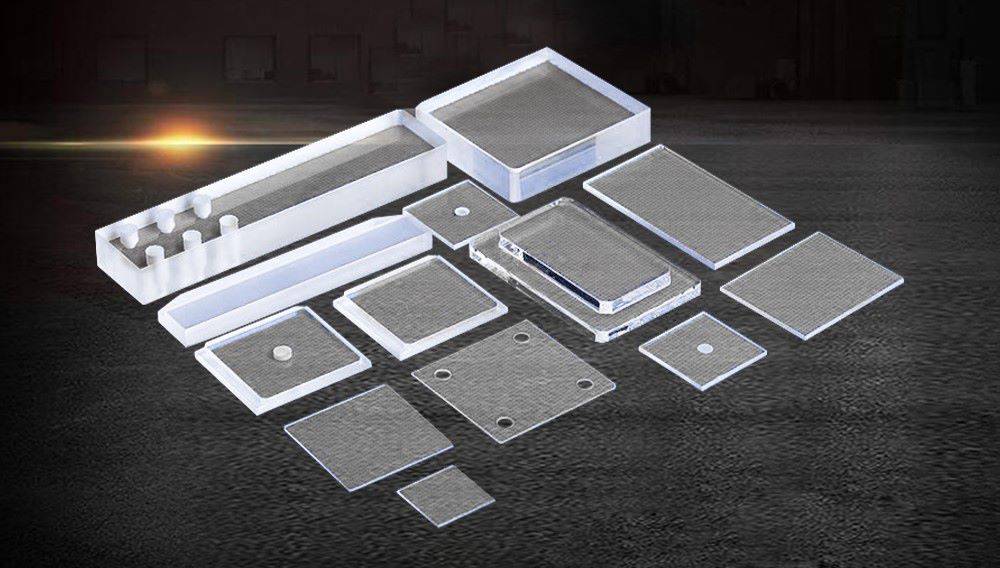
Chemical and Medical Precision Glass
Fused silica's exceptional resistance to both chemical and thermal damage renders it an ideal material for precision glassware in the chemical and medical sectors. This material's chemical inertness ensures that it remains unaffected by most chemicals, with the notable exceptions of potassium hydroxide and hydrofluoric acid. This characteristic makes fused silica an excellent choice for containers and instruments that handle aggressive chemicals without compromising their structural integrity.
In the medical field, the thermal stability of fused silica is particularly advantageous. Its low coefficient of thermal expansion allows it to maintain dimensional stability over a wide temperature range, making it suitable for applications involving high-temperature sterilization processes. This property is crucial for medical instruments that need to withstand repeated exposure to extreme temperatures without degradation.
Moreover, fused silica's high purity and optical transparency are beneficial in medical diagnostics and research. For instance, it can be used in the fabrication of precision lenses and optical components in medical devices, ensuring clear and accurate imaging. Its ability to transmit light across the UV to IR spectrum makes it a valuable material in various medical applications, including laser surgery and optical coherence tomography.
In summary, fused silica's combination of chemical resistance, thermal stability, and optical properties positions it as a superior material for precision glassware in both chemical and medical contexts. Its unique attributes not only enhance the durability and reliability of instruments but also contribute to improved performance and accuracy in critical applications.
Electronics and High-Temperature Applications
Fused silica is extensively employed in the electronics industry for its exceptional thermal stability and insulating properties. In environments where components are subjected to extreme temperatures, fused silica serves as a critical material to ensure the longevity and performance of electronic devices. Its low coefficient of thermal expansion allows it to maintain dimensional stability even under significant temperature fluctuations, making it an ideal choice for insulating components that operate in high-temperature conditions.
Moreover, fused silica's electrical insulating properties are unparalleled, providing high resistance that is crucial for high-frequency applications. This makes it indispensable in the design of advanced electronic systems, where maintaining signal integrity and preventing electrical shorts are paramount. The material's ability to withstand high temperatures without compromising its insulating capabilities further enhances its utility in these applications.
In summary, fused silica's unique combination of thermal and electrical properties makes it an essential material in electronics, particularly in scenarios where high-temperature stability is a critical requirement. Its use ensures the reliability and durability of electronic components in demanding environments, underscoring its importance in modern technological advancements.
Optical and Laser Technology
Fused silica plays a pivotal role in the field of optical and laser technology, primarily due to its exceptional optical properties. Its high transparency across the ultraviolet (UV) to infrared (IR) spectrum makes it an ideal material for various optical components. This transparency ensures minimal signal loss and superior performance in high-precision applications.
In laser optics, fused silica is used to fabricate lenses, mirrors, and waveguides. These components are crucial for maintaining the coherence and efficiency of laser beams. The material's low dispersion characteristics further enhance its suitability for high-power laser systems, where maintaining beam quality is paramount.
Moreover, fused silica's mechanical and thermal stability allows it to withstand the rigorous conditions often encountered in laser technology. Its low coefficient of thermal expansion ensures that optical components remain dimensionally stable under varying temperatures, reducing the risk of distortion and misalignment.
| Property | Benefit in Optical and Laser Technology |
|---|---|
| High Transparency | Minimizes signal loss and enhances performance |
| Low Dispersion | Maintains beam quality in high-power systems |
| Mechanical Stability | Resists compression and maintains shape |
| Thermal Stability | Ensures dimensional stability under varying temperatures |
These properties collectively make fused silica an indispensable material in the development and operation of advanced optical and laser systems.
Semiconductor Industry
Fused silica is highly valued in the semiconductor industry due to its exceptional purity, which is crucial for the fabrication of high-performance electronic components. The purity of fused silica ensures minimal contamination, thereby enhancing the reliability and efficiency of semiconductor devices. This material is used in various critical applications within the semiconductor manufacturing process, including as substrates for photomasks and as components in chemical vapor deposition reactors.
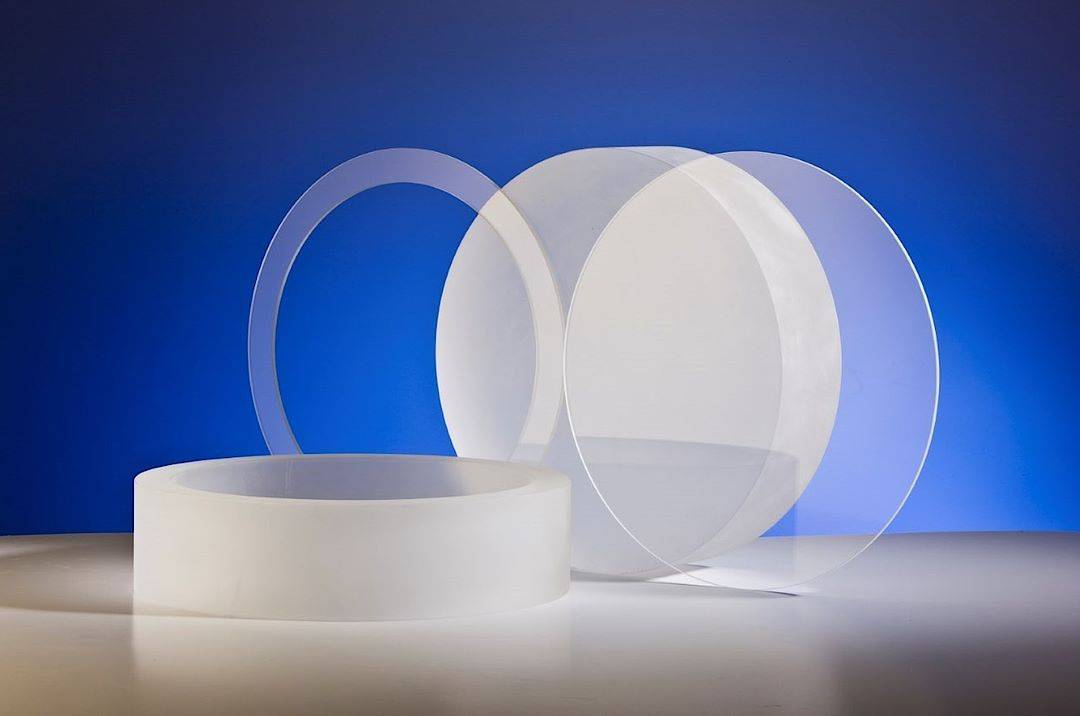
In the context of photomasks, fused silica serves as a stable and transparent substrate, allowing for precise patterning of semiconductor layers. Its high transparency across the UV to IR spectrum is particularly advantageous for photolithography, a key process in semiconductor fabrication that requires high-resolution imaging. Additionally, fused silica's low coefficient of thermal expansion ensures that the dimensions of these masks remain consistent under varying temperatures, which is essential for maintaining the accuracy of the patterns transferred onto the semiconductor wafers.
Moreover, in chemical vapor deposition (CVD) reactors, fused silica is employed for its excellent thermal stability and resistance to corrosive chemicals. These properties enable it to withstand the harsh conditions of high-temperature processes, making it an ideal material for the fabrication of semiconductor components such as wafers and integrated circuits. The combination of fused silica's chemical inertness, electrical insulation properties, and mechanical strength makes it a versatile and indispensable material in the semiconductor industry.
UV Hygiene
Fused silica is extensively utilized in ultraviolet (UV) sanitation equipment, primarily due to its exceptional resistance to both heat and radiation. This material's inherent properties make it an ideal candidate for environments where high temperatures and intense radiation are prevalent. For instance, in UV sterilization systems, fused silica components can withstand the rigorous conditions without degrading, ensuring the long-term efficacy of the sanitation process.
The durability of fused silica under such extreme conditions is a direct result of its unique chemical and thermal properties. Unlike conventional materials, fused silica does not suffer from thermal stress or radiation damage, which are common issues in UV applications. This makes it a reliable and sustainable choice for critical hygiene applications, where the integrity of the material is paramount to maintaining sterile conditions.
Moreover, fused silica's transparency across the UV spectrum further enhances its utility in UV hygiene. This transparency allows for efficient transmission of UV light, which is crucial for the sterilization process. Consequently, fused silica components in UV equipment not only endure the harsh operational conditions but also contribute to the overall efficiency and effectiveness of the sanitation system.
Related Products
- High Temperature Resistant Optical Quartz Glass Sheet
- Infrared Transmission Coating Sapphire Sheet Substrate Window
- Customizable XRD Sample Holders for Diverse Research Applications
- Optical Window Glass Substrate Wafer Quartz Plate JGS1 JGS2 JGS3
- CVD Diamond Optical Windows for Lab Applications
Related Articles
- How to Save Money When Buying a Rotary Evaporator (Rotavapor)
- Unveiling the Exceptional Properties and Applications of Optical Quartz Plates
- Understanding Quartz Electrolytic Cells: Applications, Mechanisms, and Advantages
- Optical Quartz Plate: A Comprehensive Guide to Applications, Specifications, and Usage
- Technological Innovations in the Fused Silica Industry

